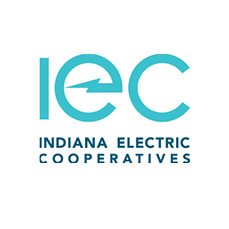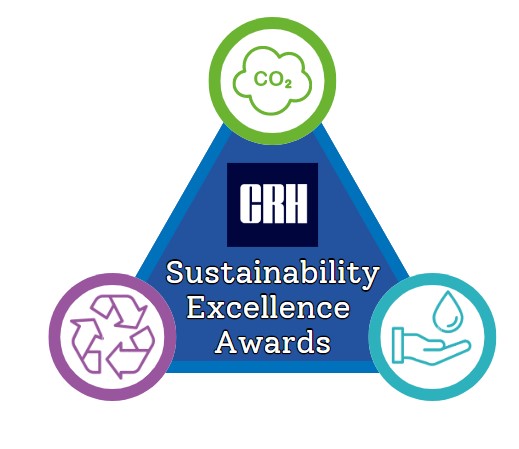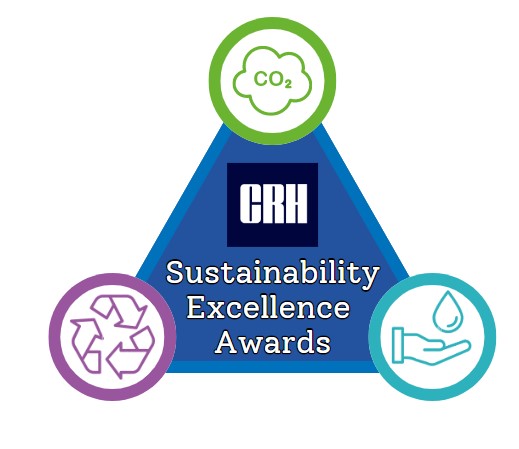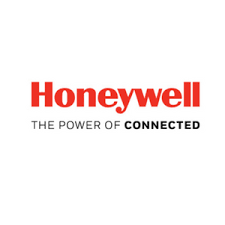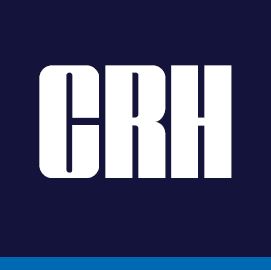Title Page
-
Cooperative
-
Conducted on
-
Prepared by
General Facility
-
Good housekeeping is maintained.
-
Up-to-date Emergency Evacuation Procedures are posted?
-
Multiple types of public safety education materials for all age groups are conspicuously displayed in the lobby or can be generated upon request.
-
There is a sign posted telling visitors that they must sign in? Visitors have signed the log book?
-
All cables, cords, and power strips are stowed, routed, bundled, and supported to be clear of areas where they could be damaged or cause other hazards.
-
Are there areas in the workplace (perhaps a portable generator) where continuous noise levels exceed 85 dBA?
-
Is approved hearing protective equipment available to every employee working in elevated noise level areas?
Walking Surfaces and Ladders
-
Stairs, landings, and steps are free of any impediments, edges are easy to discern, and allow safe movement in any direction. Steps and risers are uniform. Steps are well lit and marked as needed for visibility.
-
Hazard identification markings are in use as needed and meet the current requirements for background and letter coloring, size, shape, and appropriate levels of warning. Danger, Warning, Caution, low clearances, floor openings, uneven surfaces, walkways, or hazardous work zones are clearly marked.
-
Hand trucks or hand carts are available and of suitable capacity for handling materials commonly stored in each area. They are well maintained, found in very good condition, and clearly marked with capacity ratings.
-
Portable ladders/steps are in good condition with a valid date on the inspection sticker. Class, capacity ratings, and setup instructions are fully legible.
-
Emergency egress and access lighting is operational and can be served by backup generation or batteries in facilities.
-
Is there an elevated aisle or walkway surface that is more than 30 inches above the ground?
-
Are standard guardrails provided wherever aisle or walkway surfaces are elevated more than 30 inches above any adjacent floor or the ground?
-
Are standard stair rails or handrails on all stairways having four or more risers?
-
All elevated surfaces (beneath which people or machinery could be exposed to falling objects) provided with standard 4-inch toeboards?
-
Where stairs or stairways exit directly into any area where vehicles may be operated, are adequate barriers and warnings provided to prevent employees stepping into the path of traffic?
-
Are signs posted if floors are wet?
Fire Prevention
-
The facility has minimum 60 B:C (10 lbs) fire extinguishers within 50' of any location; 50' of flammable store area and parts washer; located near exits or emergency paths; in the vicinity of data centers, data equipment or electronic controls; in the vicinity of combustibles and flammables; located on structures to required heights of 3' to 5'.
-
Fire extinguishers are available & accessible - not blocked.
-
Are fire extinguishers inspected monthly?
-
Is the fire alarm and fire sprinkler systems fully operational and inspected annually. Sprinkler heads are a minimum of 18 inches from any obstruction, stored material, or facility structure that would interfere with the discharge.
-
IT equipment servers and sensitive electronic equipment extinguishers of the carbon dioxide type or a halogenated agent type shall be provided for the protection of electronic equipment. A sign is located adjacent to the agent or door entrance and plainly indicates the type of fire for which it is intended.
-
All facility doors and intended emergency pathways leading to the outside are unobstructed, capable of being used at any time from the inside, and clearly labeled as an "Exit" or "To an Exit". Doors and emergency pathways that are not suitable for exits shall be marked as "Not an Exit". All "Exit" signs shall be fully operational and illuminated internally or externally.
First Aid
-
First aid kits, AED, and Bloodborne Pathogen kits are readily available, replenished as needed, and serve the emergency needs anticipated.
-
First aid kits, BBP, and AED have documented inspections monthly.
-
First aid kits, BBP, and AED have unexpired products.
-
Self-contained or portable eyewash equipment is available for emergency use in areas with chemical hazards, not expired, and inspected per manufacturer's recommendation (weekly for plumbed eyewash system).
-
Sharps containers and infectious waste containers are made available.
Employee Awareness
-
Are employees aware of emergency procedures (for Mayday, weather, bomb threats, workplace violence, and fire), nearest exits, location, and use of fire extinguishers, SDS, and first aid equipment?
-
Security measures are evident and interviewed employees are trained as to what information can and cannot be shared. Access to non-public areas is limited. Security measures are in place (cameras, guards, panic buttons, etc.). Cash handling procedures (including deposit times, methods, and details ) are not divulged.
-
Do employees have easy access to Safety Data Sheets (SDS's)?
-
Do workers know how to properly report an accident or a hazard?
Warehouse
-
Shelves, bins, and racks are designed, constructed, and used in a manner that safely contains the materials and equipment in stock. They are rated and visibly marked with maximum capacity. Designed to hold materials in place to lessen the chances of falling. Are designed or anchored to avoid tipping.
-
Materials are stored in a safe and orderly manner. No sharp ends or protruding objects are extending from storage positions to catch clothing or injure a person passing in aisles.
-
Aisles and walkways are clear paths for pedestrian use and are designated accordingly where equipment crosses or shares these pathways. They have no obstructions. Low clearances are marked with signs.
-
Docks and safety rails are in good condition and meet regulatory requirements. Rails or barriers in place for docks with 48" or more elevation. Wheel chocks or other means are available for securing vehicles while loading or unloading. Dock plates or ramps are available to bridge the gap when using lift trucks.
-
Floor hoists, jacks, and jack stands are clearly marked with capacity ratings and are found in good useable condition.
-
Shields/guards are in place, adjusted properly, and well maintained for power tools.
-
Do abrasive wheel grinders have their work-rest kept adjusted to within 1/8 inch of the wheel? The adjustable tongue on the top side of the grinder is adjusted within 1/4 inch of the wheel? Do the side guards cover the spindle, nut, and flange, and 75% of the wheel diameter? Are bench and pedestal grinders permanently mounted? Are goggles, face shields, and/or hearing protection available for use when grinding? Is cleanliness maintained around grinders? Danger signs present and legible at eye level and secured? Sign to NOT wear gloves?
-
Each power tool station has appropriate eye or face protection available (including eye protection that provides side protection), with signs posted requiring use.
-
Drill press is maintained and in ready-use status. Mounted on a large base or anchored. Sign to NOT wear gloves. Chuck key is not left in the drill press. Guard for spindle present. Clamp or vise present to hold in place. Lubrication is present for drilling metals. Brush is used to clean up shavings. PPE is present and ready for use (safety glasses, face shield, hearing protection).
-
Pneumatic tools are maintained and in ready-use status. Locking device for air hose to tool. If the air hose is more than 1/2" in diameter does it have a safety valve? Safety clip present on tools. Release protection in place. PPE present and ready for use. If compressed air is used for cleaning, psi is less than 30, with clip guarding placed on the air gun.
-
Panels or safety switches have 36" in front, 30" wide, and 72" headroom clearance. Panels are secured and doors are closed tight.
-
Used and oily rags are contained in metal self-closing containers that are emptied on a daily basis.
-
Tire changing tools and safety equipment in good condition. Clip-on chucks, in-line valves, and pressure gauges are part of the air-line assemblies. Restraining device is available to constrain all rim wheel components. Current charts or rim manuals are available in the service area, containing instructions for the types of wheels being serviced. Compressors and related equipment have correct pressure valves and reducers.
-
Power lawn mowers are maintained and in ready-use status. Chains and belts are guarded. Controls are legible. "Warning" for catcher or guard in place. "Caution" displayed near discharge. Seatbelt is available and in working order?
Mobile Equipment - Forklift, Scissor Lift, Etc.
-
Does the Cooperative have any mobile equipment?
-
The mobile equipment is equipped with the necessary safety equipment (seat belt, safety decals, guards, shields)
-
It is equipped with a 10 B:C (5 lb) fire extinguisher and inspected monthly.
-
It has an operator safety instruction manual located on these vehicles or easily available to the operator.
-
It is inspected daily before being placed in service.
-
Trailers and towed equipment are properly chocked when unhitched or parked. (Has at least two effective wheel chocks available and properly stored when towing.)
Welding and Cutting
-
Does the Cooperative perform any welding or cutting?
-
Welding areas are properly equipped and maintained? Clearly marked "Welding Area", designed with a protective shield or curtain to protect those in vicinity of welding activity, signs posted indicating "Eye Protection Required".
-
Welding safety equipment, helmets, face shields, goggles, gloves, sleeves, and aprons are available in serviceable condition.
-
Welding equipment, cables, connections, clamps, and electrode holders are in good condition.
-
All gas cylinders are capped when not in use, stored upright, and secured to avoid tipping. Full and empty cylinders are properly stored in areas marked "Empty" and "Full" accordingly. Cylinders with substances that react with others substances are stored in separate locations except those being used and/or mounted on a welding cart during use.
-
Fire extinguishers are present within 25 feet of welding work areas.
Flammable Materials
-
Flammable cabinets are available for storage of flammable materials, without leaks or spills, and meet regulatory requirements for design and use. Marked with "Flammable" and "No Smoking". Closed and latched after each use. LP gas cylinders not stored in flammable cabinets. Located away from facility energized electrical equipment. A maximum of 3 flammable cabinets are located in any work area.
-
Propane cylinders are stored outside in a cage to meet NFPA 58. Cage is in good condition with legible safety signage. Units are kept at least 10' away from flammable materials and electric tools. Grill units stored vertically; forklift units stored vertically or horizontally. If stored horizontally, relief valve is kept clean, unrestricted, set in 12 o'clock position, directed upward at 45 degrees. Inspected annually and documented is considered a RESAP exceeds.
-
Propane cylinders have no dents or bulges in units. Protective collar on units not damaged. Foot ring on units not damaged. Requalified in last 12 years.
-
Portable flammable containers are designed and labeled for products being stored and meet current use and storage requirements. Properly rated (FM or UL).
-
Flammable storage rooms meet the current use and design requirements. Trash receptacles in these rooms are metal containers with self-closing lids. All flammable materials are stored in an orderly manner and free of any leaks or spills. Doors are closed and latched after each use. Entrances are marked with "Flammable" and "No Smoking" signs.
-
When not in use, flammable/combustibles are stored in approved flammable cabinets.
-
Parts cleaning and other solvents (flammable or biodegradable) are stored and used properly in maintenance/repair facilities. The parts washer is well maintained and UL listed. The parts washer has "Flammable" and "No Smoking" signs posted. Appropriate PPE is available for use (rubber gloves, goggles, and splash apron). The eye wash station is within regulatory distance to the parts washer.
Environmental and Hazardous Materials
-
Universal Waste containers are stored closed, structurally sound, compatible with the waste, lack evidence of leakage, spillage, or damage that could cause leakage, properly labeled or marked clearly with the appropriate "universal waste" listings. Each container must be marked or labeled with the earliest date that any universal waste in the container became a waste (not to exceed 1 year from the earliest date); OR each individual item must be marked or labeled with the date it became a waste or was received; OR maintain an inventory system on-site that identifies the date each universal waste became a waste or was received.
-
The facility has appropriate storage and management area to safely handle PCB-contaminated material for future disposal. The area has appropriate signage, adequate containment and barriers, and appropriate spill kits. Records are maintained.
-
SPCC regulations have been implemented and a plan has been developed.
-
Does the Cooperative have pesticides?
-
Pesticides are stored in appropriate containers with required labels.
-
Secondary containment is adequate to contain spills and management of liquids in case of release.
-
Appropriate PPE is available for those handling pesticides (gloves, eye shield, splash apron, and respirator if necessary).
-
Appropriate signage such as "Danger Pesticide Storage Area" with skull and cross bones, "Danger Pesticide Storage", are placed in appropriate locations.
-
Does the Cooperative have above-ground storage tanks for fuel?
-
Each service or fueling area has at least one fire extinguisher with a minimum 120 B:C (20 lbs) capacity rating and is located between 25 feet and 50 feet of pump dispensers. Signage posted "No Smoking", "No Open Flames" and "Shut Off (gasoline) Motors During Fueling".
-
The dispensing nozzles are equipped with approved automatic closing devices and hoses are equipped with break-away connectors.
-
Clearly identified and accessible emergency shut-offs are provided within 50 feet of dispensing devices. Islands and barriers are provided to protect the fuel pumps. Hoses are stored out of the traffic area.
-
An EPA "Ultra-Low Sulfur Highway Diesel Fuel" label is conspicuously affixed on the upper 2/3 of all diesel fuel dispenser pumps.
-
Does the Cooperative have under-ground storage tanks for fuel?
-
Each service or fueling area has at least one fire extinguisher with a minimum 120 B:C (20 lbs) capacity rating and is located between 25 feet and 50 feet of pump dispensers. Signage posted "No Smoking", "No Open Flames" and "Shut Off (gasoline) Motors During Fueling".
-
The dispensing nozzles are equipped with approved automatic closing devices and hoses are equipped with break-away connectors.
-
Clearly identified and accessible emergency shut-offs are provided within 25 to 100 feet of dispensing devices. Islands and barriers are provided to protect the fuel pumps. Hoses are stored out of the traffic area.
-
An EPA "Ultra-Low Sulfur Highway Diesel Fuel" label is conspicuously affixed on the upper 2/3 of all diesel fuel dispenser pumps.
Pole Yard and Outside Storage
-
Gates and fencing are designed to secure pole yards and outside storage areas. "No Trespassing" and/or "Authorized Persons Only" signs are posted on all sides of pole yard and the outside storage area. Pole yard and outside areas are totally enclosed with a security fence that is a minimum of 6 feet high; no gaps more than 4" below the fence.
-
Gates and entrances to these areas are located where vehicles and equipment can safely clear the traveled portion of public roads during gate operation, locking, or unlocking.
-
Poles are stored to preserve their condition, organized for safe selection and loading, and secured by pole stops or bunk design. Poles are separated by length/class, safely stacked, and stored off the ground.
-
Materials are properly stored off the bare ground, with related material stored together, and identified by unit markings or marked storage area.
-
Pole yard and outside storage areas are adequately lit during hours of darkness for expected work activities.
-
Pole yard and outside storage areas are designed for large equipment maneuverability in all weather conditions with wide driving lanes, solid surfaces, and adequate drainage.
Other Information
-
A copy of all written safety and compliance plans and programs is available and easily accessible for all employees. These include, but are not limited to the following: Emergency Action Plan, Chemical Hazard Communication, Bloodborne Pathogens, Safety Manual/Rules, PPE Procedures, and applicable Job Safety Analysis (JSA/JHA).
-
Contractors working have completed cooperative safety orientation prior to beginning work?
-
The labor posting board is current and up-to-date. OSHA Injury/Illness Summaries (OSHA Form 300(A) is completed and posted from Feb 1 to April 30.
-
The Management of Change (MOC) form is documented and approved by the safety committee for new equipment or improvement initiatives?
-
Any other observations or recommendations?
